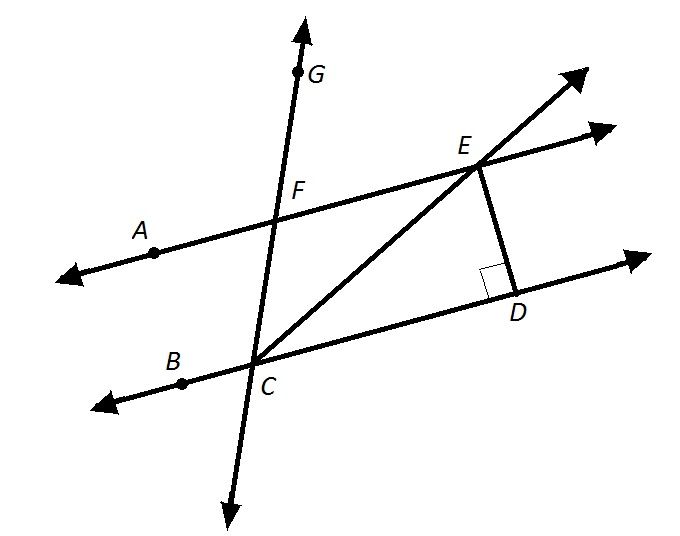All GED Math Resources
Example Questions
Example Question #34 : Other Shapes

Note: Figure NOT drawn to scale.
Refer to the above figure. 

Evaluate 
First, we find 
By angle addition,











The degree measures of three angles of a triangle total 
Example Question #35 : Other Shapes

Refer to the above figure, which shows Square 

Evaluate 
By angle addition,






Example Question #2 : Angles

Refer to the above figure. 

Evaluate 
By angle addition,





Therefore,

Example Question #31 : Other Shapes
Give the number of sides of a regular polygon whose interior angles have measure 
The easiest way to solve this is to look at the exterior angles, each of which have measure 



The polygon has 36 sides.
Example Question #3 : Angles
Three consecutive even angles add up to 
Let 

Set up an equation such that all angles added equal to 180.
Divide by three on both sides.
The second largest angle is 
Substitute the value of 
The answer is:
Example Question #1 : Angle Geometry

Refer to the above figure. You are given that 
Which two angles must be complementary?
















Example Question #1 : Angle Geometry
Angles A and B are complementary angles. The measure of angle A is 


Since angles A and B are complementary, their measures add up to 90 degrees. Therefore we can set up our equation as such:
-or-
Combine like terms and solve for 
Example Question #1 : Angle Geometry
What is the measure of an angle that is complementary to an angle measuring 
The sum of complementary angles is equal to 
Set up the following equation and solve for 
Example Question #3 : Complementary Angles
Angles A and B are complementary angles. The measure of angle A is 


Since angles A and B are complementary angles, their measurements add up to equal 90. Therefore, we need to set up our equation as follows:
-or-
Combine like terms:
And solve for 
Example Question #433 : 2 Dimensional Geometry
Angles A and B are complementary angles. The measure of angle A is 

No solution
Since angles A and B are complementary, their measures add up to equal 90 degrees. Therefore we can set up an equation as follows:
-or-
Combine like terms and solve for 
Now that we have found 
All GED Math Resources





























































































